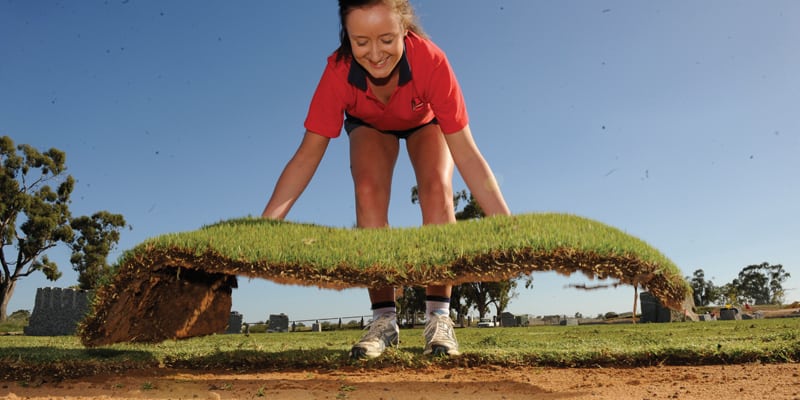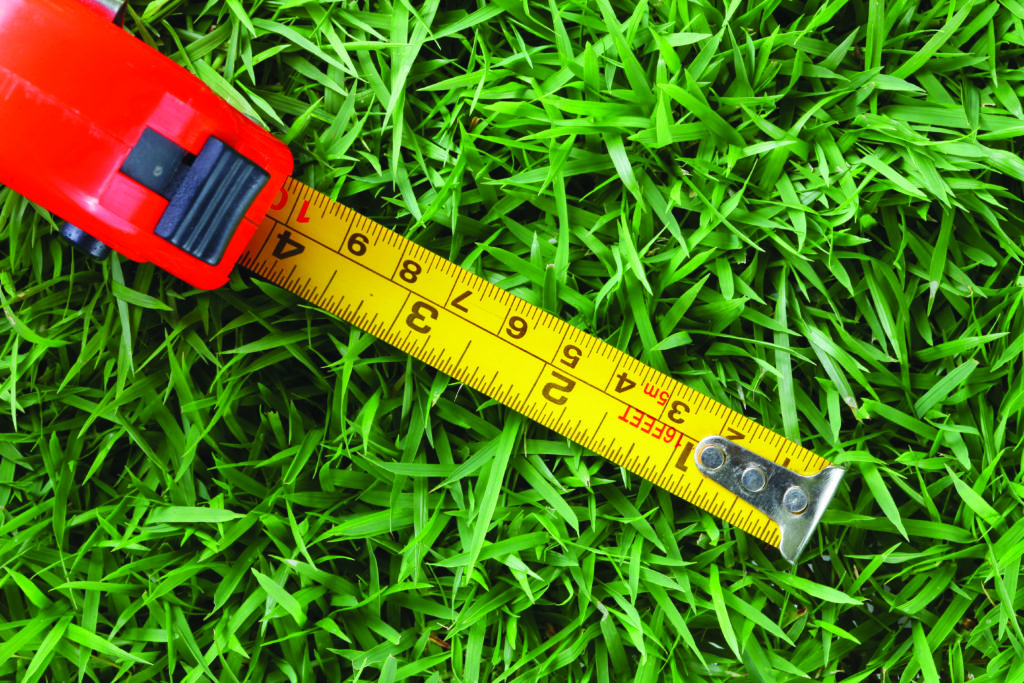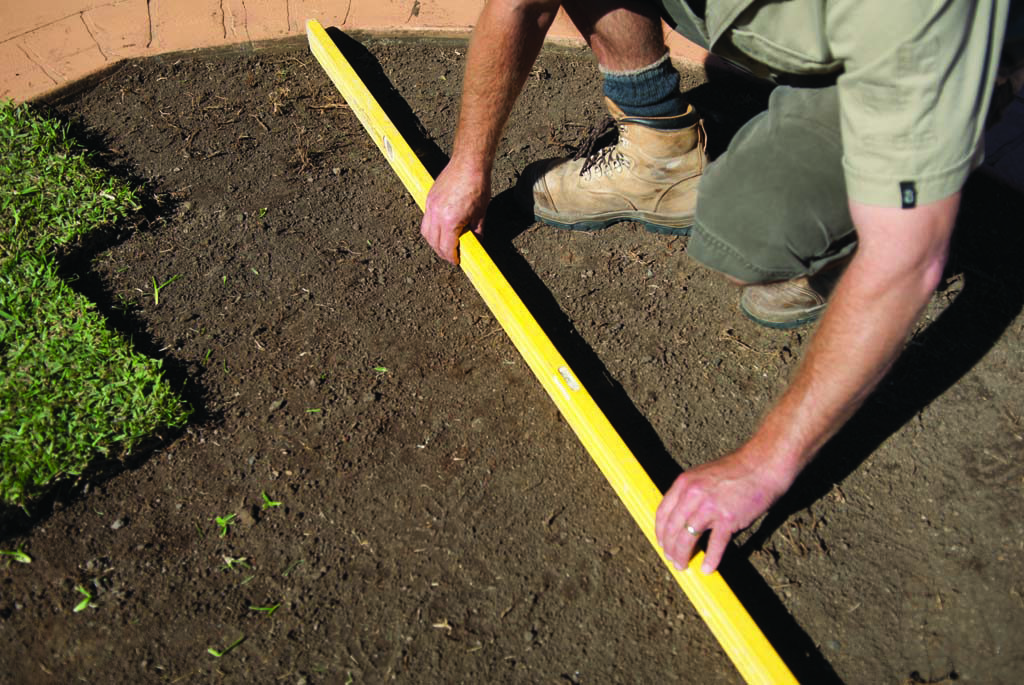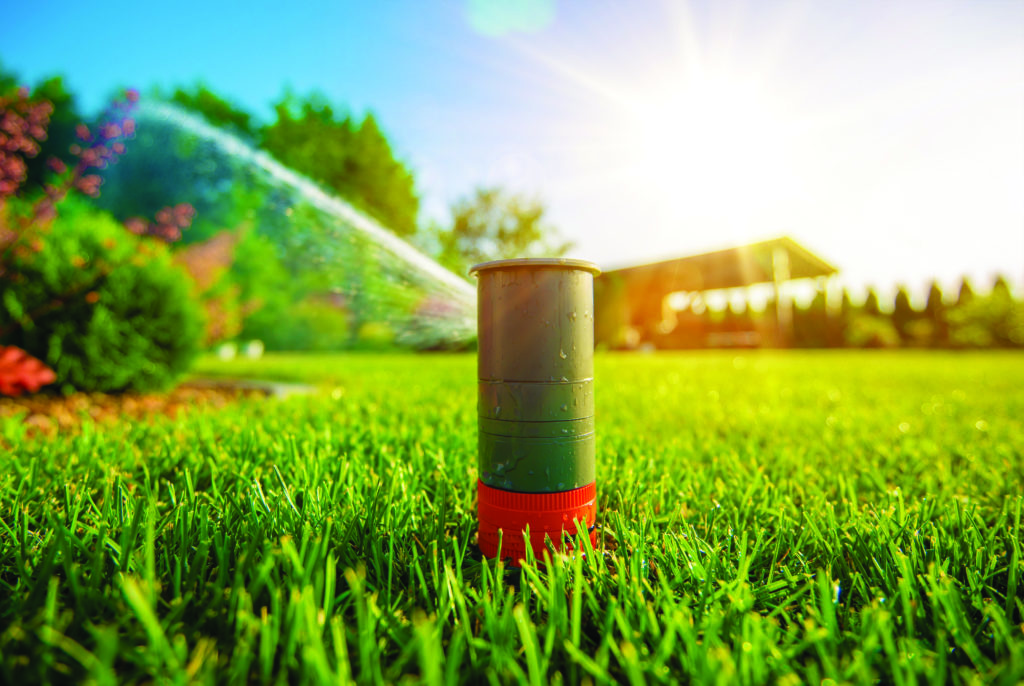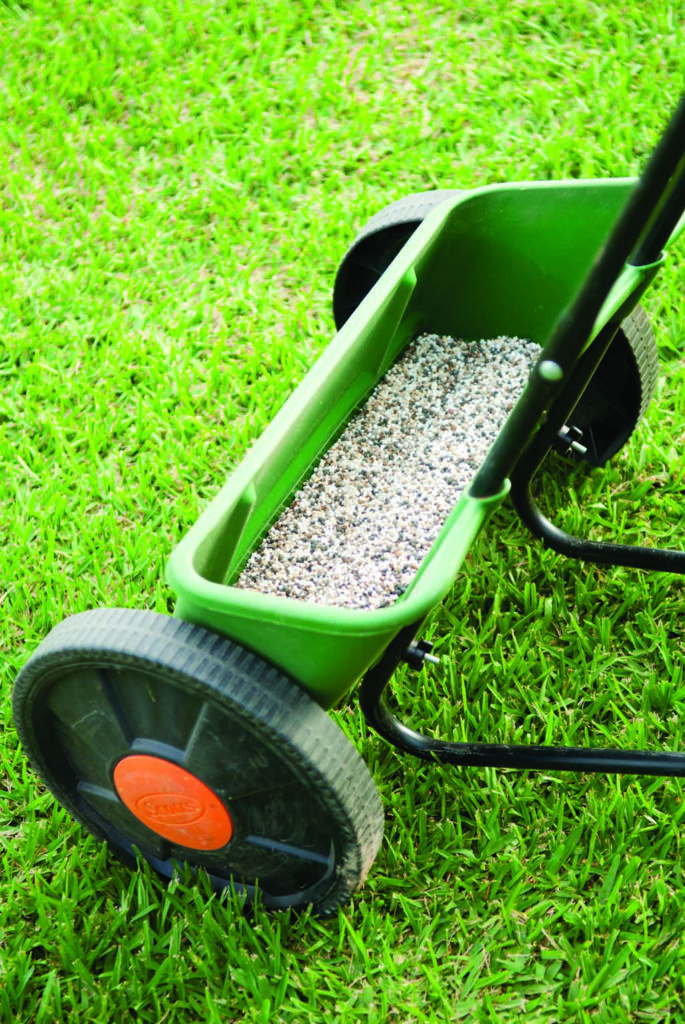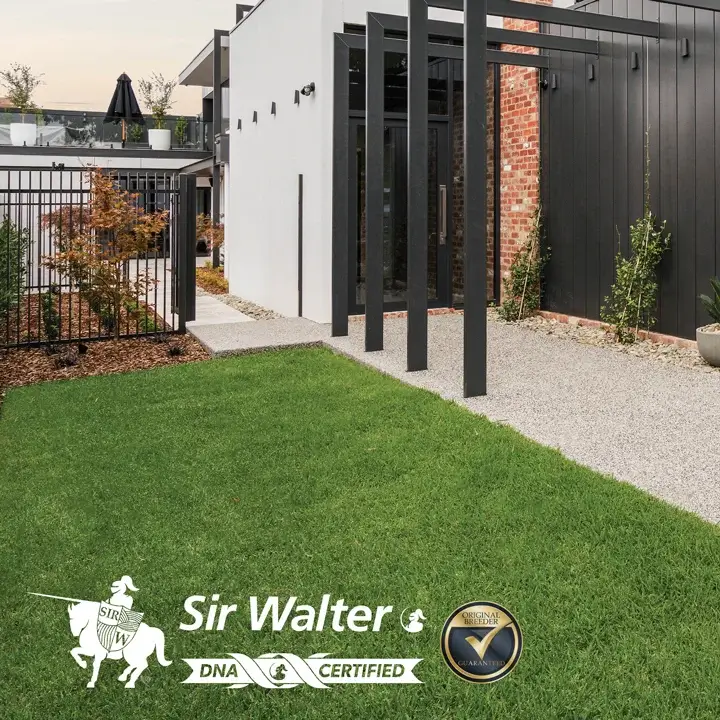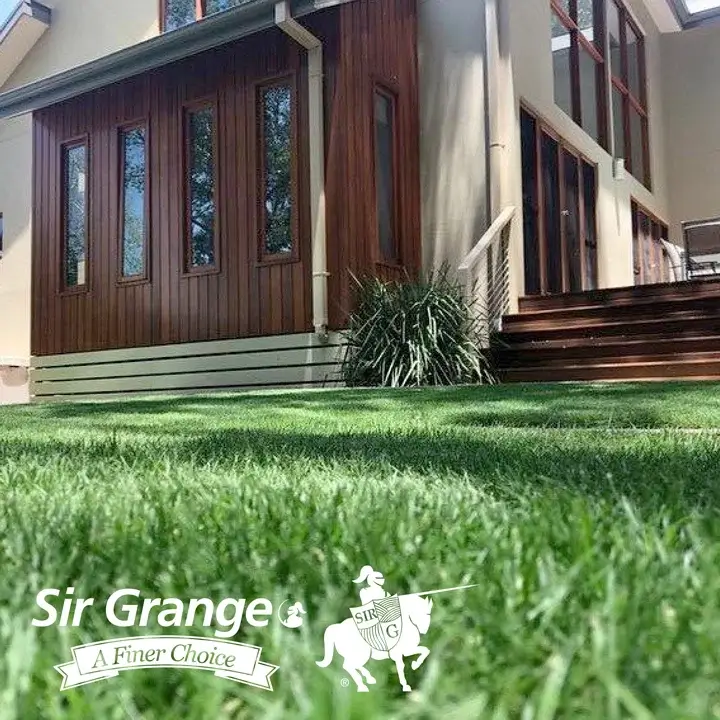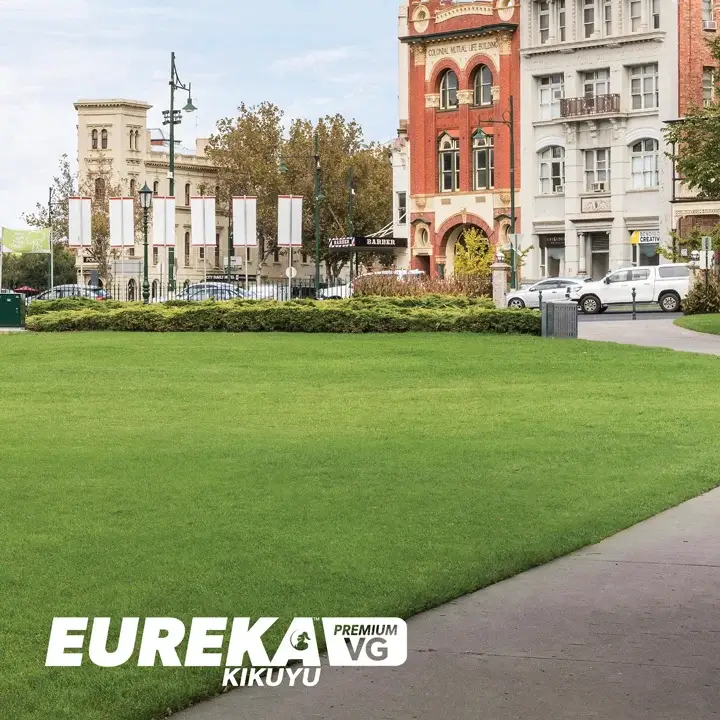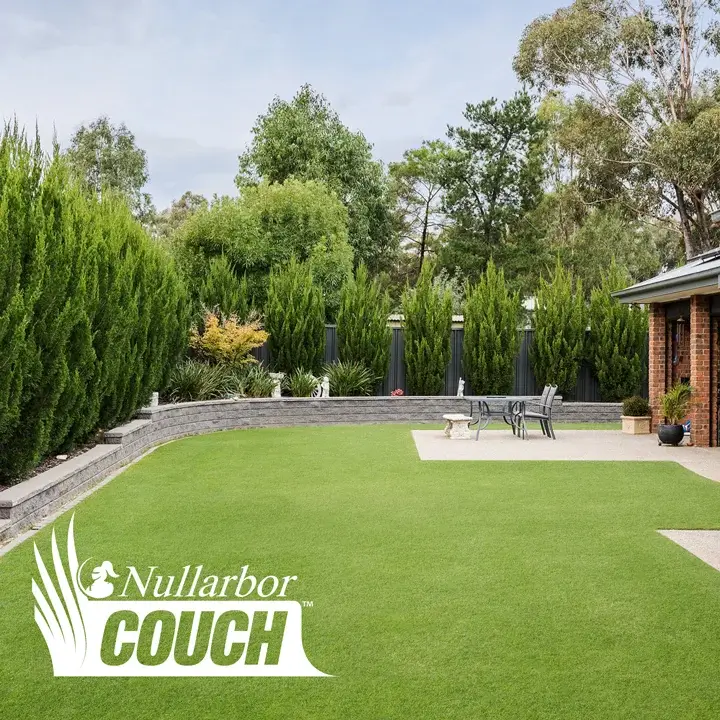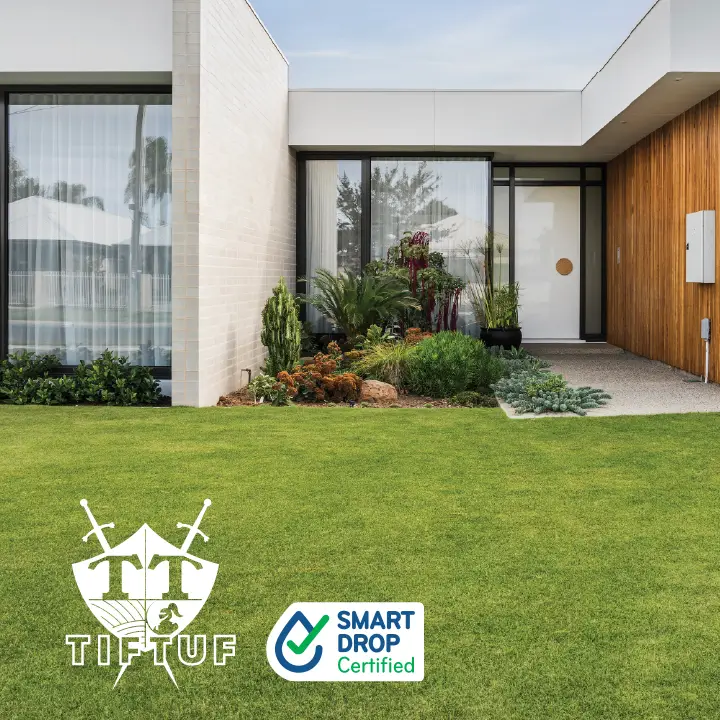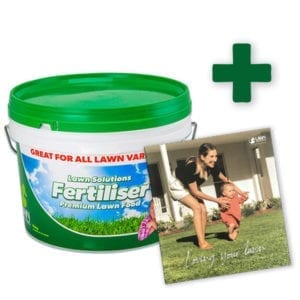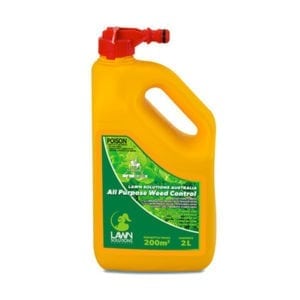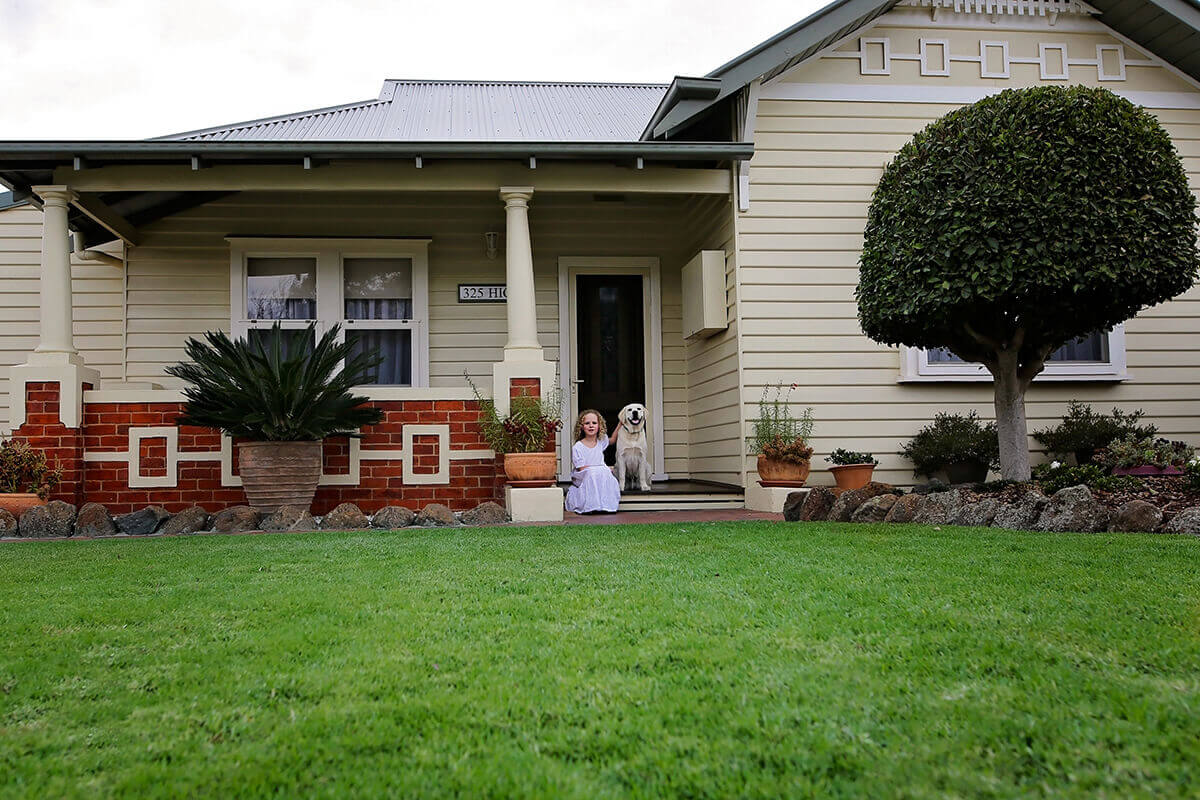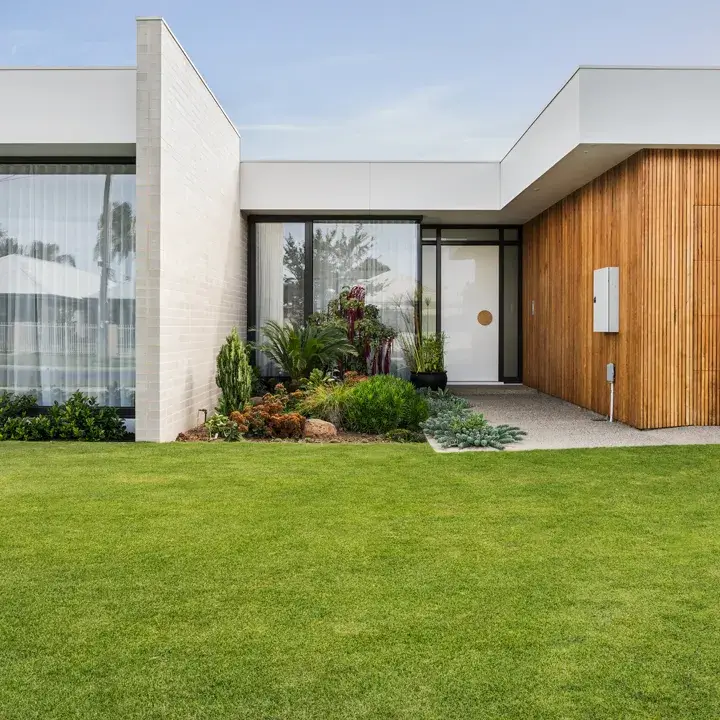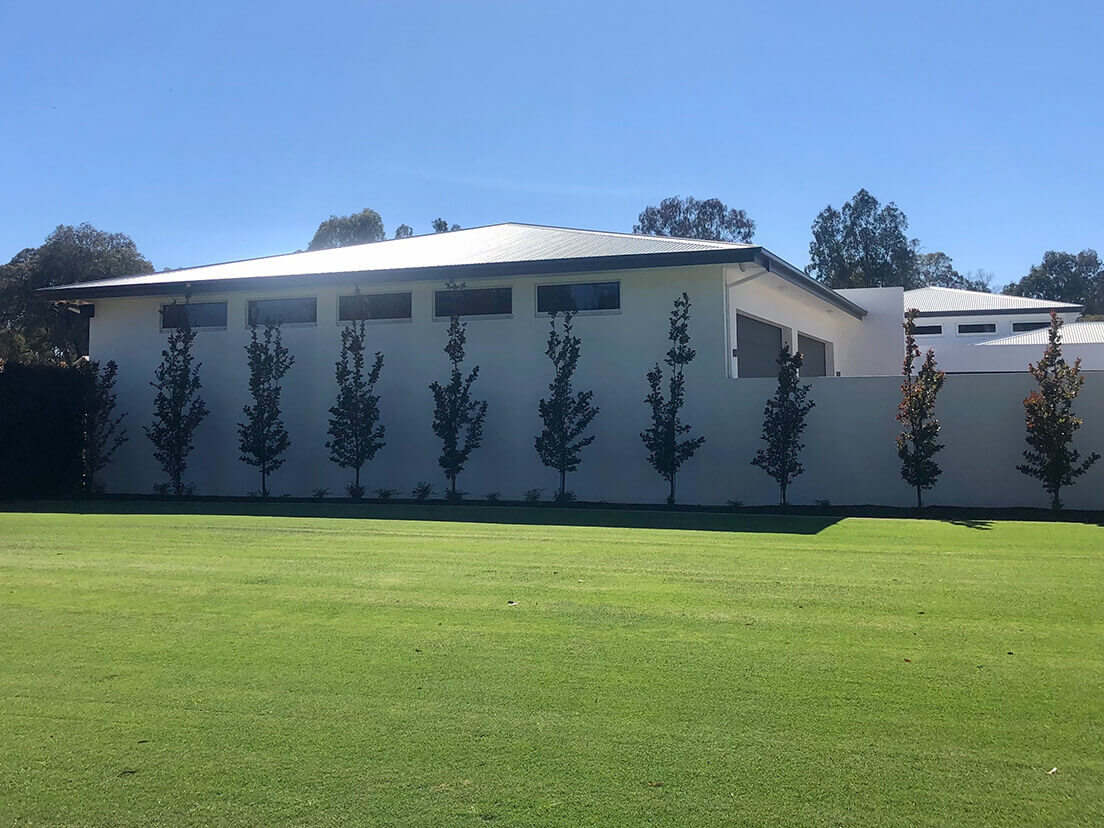While laying instant turf in itself is an easy job, your lawn will only be as good as the soil you’re laying it on - so for best results it’s worth spending the time to properly plan and prepare your site.To help you install your new lawn and maintain it we have listed all the expert tips with step-by-step instructions to ensure you’ll always have the best looking lawn in the street.Whether you’re starting from scratch or replacing an unloved area of your yard, instant turf is the quickest, cheapest and easiest way to transform your outdoor space from drab to fab!
What equipment do I need to lay instant turf?
Laying instant turf doesn’t require any fancy equipment. Provided you have the following basic garden tools you will be off to a good to start:
- Measuring tape
- Spade or shovel
- Shears or a sharp knife to cut turf in and around garden edges, sprinklers etc.
- Rake (to smooth out any disturbance to soil whilst laying)
Site preparation and expectations of your new landscape design
Before embarking on any turf project, make sure the area you’re looking to lay turf on is suitable. Many turf varieties will require about 6 hours of direct sunlight (mainly couch and kikuyu turfs like Nullarbor Couch and Eureka Premium VG Kikuyu), however, with recent housing trends seeing larger homes being built on smaller size blocks, it’s more likely that you’ll need to consider a shade tolerant turf, which will thrive in as little as 3-4 hours of sunlight per day. Sir Walter DNA Certified instant turf is the king of turf in shade. This characteristic is one of the main reasons Sir Walter DNA Certified continues to be the number one selling turf choice for Victorian home owners. You’ll also need to think about the amount of traffic from pets and children, drainage, mowing and access to good quality water. When it comes time to landscape your backyard, you should always leave the turf until last. This way, you won't have to work over fresh new turf while you’re planting trees or shoveling rocks and you’ll know exactly how much space you have and where your shade and drainage points are.
What Type Of Instant Turf Should I Choose?
Once you’ve planned your site it is necessary to determine which turf type will be best suited to your outdoor space. It is critical that you do your research as different varieties of turf perform very differently from one another. If you’re uncertain, speak to a professional. Our qualified Coolabah team have all the knowledge to help advise you on the best turf for your situation. View the full range of Coolabah’s different turf varieties. Still unsure, why not take our online Turf Test to help you decide.
How to measure how much turf you will need
Measuring for turf is easy! Simply find the square meterage of your yard by breaking it up into geometric shapes which are easy to find the area of. Then add the total square meterage of all the shapes together.After you find your total, add 5-10% to allow for cutting around odd shapes and objects such as trees. There’s nothing worse than just running out of turf when you’re almost finished laying it - so best to be safe than sorry!Order your turf for the day you intend to lay it. Instant turf is a perishable product so it’s critical you install it on the day it’s delivered. Here at Coolabah Turf we offer a delivery service to all regions 6 days a week.
Prepare your underlay for instant turf
Kill off any existing vegetation using a herbicide. You may need two applications to ensure all existing vegetation is completely eradicated.Hoe in and turn over the existing base and remove any excess vegetation that has been sprayed out. Depending on your existing base, add in any soil required to make sure you have the appropriate base for turf. The rule of thumb is 100mm of good quality soil underlay.Conduct a pH test on your soil using a pH testing kit. You want to have a pH between 5.5 and 7. Don't worry if it is either side of this, as pH can be adjusted with some simple treatment.A sand-soil base is always preferred. If you have a clay base you’ll need to de-compact this and add sand soil. If your base is already sandy, look at mixing in some organics to boost nutrients.Now it's time to get your levels correct. When looking to lay turf flush with an edge, keep your soil about 30-40mm below this height to allow for the thickness of the turf. Smooth out the rest of your soil, remembering to factor in drainage as you do so.Ensure the prepared surface is firm enough to walk on whilst laying but not packed too tightly. You also want to make sure the soil is moist to avoid scolding the roots, especially if laying turf during the warmer months.
Laying the Turf
Step 1
Apply fertiliser at a rate of 2kg/100m2 to the base and rake in lightly. Ensure all soil is smooth and ready for turf.
Step 2
When your turf arrives, try to get it laid as soon as possible. Tip: If it's a hot day, make sure you water each section as you lay it to avoid drying the turf out.
Step 3
Start laying turf on a straight edge at the furthest point to your access and lay back towards the exit, so you are not working over fresh turf. Lay turf in a brickwork pattern, which simply means you stagger the joins to help retain turf moisture, and make sure you butt the edges closely together. Tip: If you are working on a slope or steep gradients, it’s recommended to lay turf across the slope and you may have to peg it down to prevent it from moving until the roots have initiated.
Step 4
Use a spade or shears to shape turf around edges and trees. Do not throw away excess pieces until you’re satisfied you’ve covered all areas.
Step 5
Once complete, roll the turf to ensure good contact with the soil. Give the fresh new turf a deep water immediately.
Step 6
If you purchase our signature Coolabah Turf premium quality Sir Walter DNA Certified instant lawn in a slab cut form – this will negate the need to top dress your new lawn – which will save you time and money! If you’re laying Sir Walter DNA Certified in a traditional turf roll, it is recommended that you top dress the turf with a clean garden sand to help aid soil moisture retention and to assist with initial root establishment. Because of the process of harvesting a turf slab, as opposed to a turf roll, our team of turf professionals are able to supply your new lawn in a format which will give you a thicker root system with a more consistent base of soil, meaning no need to top dress at this point.
How long does it take to lay instant turf?
If you’re embarking on your first DIY instant lawn installation project, you can expect to lay approximately 40m2/per person/per hour – so best to put some beers on ice, crank the barbie and invite your mates around to help!
Aftercare in the first 6 weeks
Watering
The most crucial aspect in the first month is to water your lawn well so it can establish and remain healthy. If you lay your instant turf in summer, water your lawn two or three times a week for the first 3 weeks or until your first mow. If you’re laying your turf in winter, water your lawn everyday for the first 3 weeks or until the first mow.Don't be alarmed if the corners and edges of the turf pieces begin to yellow slightly, this is pretty common with new lawns.Try to keep traffic off your new lawn as much as possible until it has rooted in.
Mowing
After about 4 weeks (depending on the time of year) your lawn will be ready for its first mow. Tip: Before doing this, ensure you can not lift any of the slabs up to ensure they have rooted into the soil.When you’re mowing for the first time, mow on a slightly higher setting than normal then slowly bring it down to your preferred height over the next 2 or 3 mows. Continue watering a couple of times per week over this period to ensure the turf doesn't dry out.
Fertilising
After about 6 weeks your lawn will be due for a fertilise to really finish the establishment period off. This should be done with an NPK fertiliser and watered in well after application.If you haven’t already ordered a bucket of fertiliser when you placed your turf order, you can check the lawn fertiliser range at the Coolabah shop.
Instant Turf Maintenance
Continue to fertilise your new lawn on as needs basis (pending amount of wear!) and water only as required based on seasonal conditions. Remember – your lawn will learn to live with less water if you irrigate it less frequently – but for a longer duration – so instead of watering every day for 10 mins or so, try and get into the habit of watering it once a week – but for about 30-40mins in one single irrigation to ensure water applied gets a chance to fill the soil profile and train your lawn’s root system to mature deep into the soil surface. This practice will help your lawn become more drought tolerant and less reliant on frequent irrigation.
Enjoy your new instant lawn
Congratulations you did it! Now, it's time to get out there and enjoy your new luscious lawn!Remember our Coolabah Turf team is ready and waiting to answer any questions you may have along the way – feel free to access our FREE lawn care advice hotline for any help you might need. Our commitment to every customer is to provide free lawn care advice for the life of your lawn to help ensure you always have the best looking lawn in the street!
Need some more help?
If you would prefer assistance from a qualified landscaper to help install an automated irrigation system and to lay the turf for you, contact us for a list of recommended professional contacts in your area.Here at Coolabah Turf we pride ourselves on supplying low maintenance, drought tolerant turf varieties, combined with the best expert advice to ensure anyone can have a luscious looking lawn all year round!

